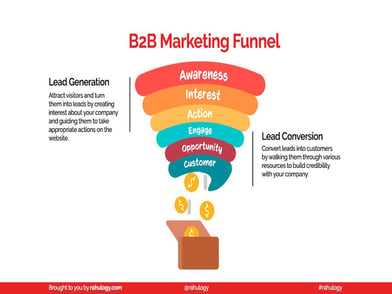Well Aware's virtual assistants like to take time off just like everyone else. Most take time off to celebrate holidays, rest towards ill health, or invest time with themselves and/or family. With that said, we understand that our clients rely on us to keep their operations up & running. So when our team is looking to meet its commitments to our clients as well as take our own time back, we look to something very simple: We prepare temporary substitutions.
Now, the reason why I'm taking the time to go over just how we at Well Aware operate this substitution workflow is as follows:
1. I want our clients to feel well about asking to keep an operation running for as long and as much as they need.
2. I want our providers a.k.a. the team to feel well about taking time off, and in kind be up for acting as temporary substitutes for their fellow VAs.
3. I want Well Aware to deliver on its principle of operational transparency for all those actively or seeking to have a relationship with us. We are Well Aware.
So with that, let's review the operation we've coined as the Substitute Well Aware Provider a.k.a. the SWAP workflow.
Part 1 - Logistics
In order to successfully perform a VA SWAP, we must consider somewhat obvious factors. First, we need to consider the workflow trigger - let's say VA#1 wants to take time off next week. Okay, for how long? Namely, how many hours? Second, we need to identify whether the client needs the operation performed by VA#1 to continue despite VA#1's taking time off. Third, we need to consider the options - who among the rest of our VA team is both interested AND able to do the work performed by VA #1? From these steps comes math that Well Aware as a business needs to then calculate. After all, our workflow efforts at the end of the day need to be financially sustainable.
Let's follow a simple example that can help us formulate some variables:
- VA#1 charges Well Aware $5 per hour for doing Client X's work
- Well Aware charges Client X $15 per hour for VA#1
- VA#1 needs to take 1 hour off next week for an appointment.
- VA#2 offers to take that 1 hour - they too charge Well Aware $5 per hour.
- VA#1 & VA#2 need 1 hour together in order to train VA#2 effectively for Client X's work needs.
Now let's variable the following:
A = The Cost of VA#1 per hour
B = The Price of VA#1's work for Client X per hour
C = The number of hours VA#1 needs time off on
D = The Cost of VA#2 per hour (the Sub for VA#1 during their time off)
E = The Time it takes to Train VA#2 on how to do VA#1's Work
Our cost for this SWAP is the time it takes to train VA#2 accordingly, which in this example is the price of VA#1 & VA#2 investing 1 hour together, (A+D)*E.
VA#2 will charge Well Aware for the substitute work at their hourly rate, D*C.
Our "budget" for this SWAP is the revenue generated from the amount Well Aware charges Client X per hour effectively substituted, B*C.
This then is our viable SWAP equation:
(A+D)*E + D*C < B*C
In words, Training + Substitute Provider Cost < SWAP Revenue.
So in the above example, our calculations as follows:
($5+$5)*1hr + $5*1hr < $15*1hr ... $15 & 3 hours < $15 & 1 Hour
Given the math in this case, it would cost more* than its worth to afford training VA#2 to perform a SWAP on behalf of VA#1 & Client X. Granted, our consideration for the client's operation could easily supersede this. Such is the cost of doing business?
What if VA#1 were to request at least 2 hours of Time Off? Here:
($5+$5)*1hr + $5*2hrs < $15*2hrs ... $20 & 4 Hours < $30 & 2 Hours
Okay so now, given the additional time off, VA#2 is able to generate more value than the total $ cost of training them for just this one time-off instance.
Couple of assumptions here:
1. VA#2 would not otherwise be working.
2. We do not wish to count VA#1's profit per hour upon their return as justification for our cost of training VA#2.
As you might imagine, if in the future VA#1 ever needed more time off, and VA#2 were available to sub in, training cost might altogether be removed, and there would be little issue with supporting our client's operation sustainably.
*Of course, this is still a gross simplification, as we have to account for other expenses! With that said, let's dive into some of the challenges behind the SWAP Op.
Part 2 - Challenges
Let's play Devil's advocate.
What if there's no time to train another VA?
Emergencies happen. This workflow accounts for time off being taken in advance with good notice. Here's the communication behind the above SWAP workflow's logistics:
1. VA#1 communicates their needing to take time off to their Well Aware client, offering to find a substitute. If a sub is requested, VA#1 communicates their need to the team channel. For clarity, VA#1 shares
a. The task type(s) along with any documentation on procedure;
b. The time and deadline of the task(s);
c. Their availability to provide on-sync training.
2. A VA#2 offers to sub for said time, given:
a. No conflict with existing work;
b. Their level of familiarity with the task(s);
c. Their confidence with needing training.
With all the above communication taken into account as part of the cost, VA#1 then runs the SWAP Math equation.
What if this whole substitute training math weren't so simple?
Beyond accounting for the additional fixed costs of our VAs over time, the SWAP equation can easily become a bit more tricky with VA#1 & VA#2's hourly costs being different. Again before training, the team has to invest time communicating the need for a SWAP. Then, training may prove to be more time-consuming as expected, and with each hour in which that's the case, again Well Aware comes out paying for it...
On the whole, we've seen training prove worthwhile for the long term. We are happier to have more VAs that are cross-trained, as it allows us to support more clients and tasks quickly, while keeping our team sharp with more varied experiences - its an investment in our capabilities and flexibility. In essence, more hours for our team = more business down the line, even if these additional hours initially come at a direct cost to our company.
What if training also requires account login access? How do you account for that?
With the right tech setup, VA#2 can be granted login access securely through VA#1 while also being held accountable to said access in a pinch. I'll share more on our security management practices in a separate article.
What if the VAs aren't even available for on-sync training?
VA#1 certainly has the knowledge to put together a Standard Operating Procedure, with video recording of their going through the workflow in real-time, generating screenshots + text explanation for review brevity where needed. Well Aware need only ask VA#1 to invest that time if it hasn't already been requested. VA#2 then needs to simply put in the time to review said SOP and check back if they have any questions. The training cost by this design becomes heavier on VA#1 on average, but it also then becomes more of a one-time cost with minor additional variable costs (tweaks to the SOP over time) for not just 1 VA training, but all future trainings for that workflow. In kind, I would support the following modification to the SWAP Equation here:
A*E1 + D*E2 + D*C < B*C
Where E1 is the time cost of VA#1's in creating SOP-based Training, and E2 is the time cost of VA#2's successfully using said SOP-based Training.
What if the client doesn't want another VA to perform their assigned workflow?
Our clients already have the near-ultimate flexibility of paying only for the hours they need and thus use. In that light, it is completely understandable that trusting another member of our team to run their operation can still feel like a leap of faith. To that end, we are Well Aware. Its our mission to embody the spirit of wellness and awareness across our entire team and its operational performance.
The SWAP workflow not only tactically offers our team's fractionalized services unto our own providers while also giving our clients the option for near-seamless operational consistency. Strategically, it aims to show how versed we are in performing as a cohesive team that can pick up where anyone of ours left off. This is our brand, our challenge, our exercise. So, what do you think?
Part 3 - What Do You Think?
Hi! Thank you for reading this far. Pardon my asking, but who are you?
Are you a potential client that's looking to work with our team? If so, what did this article provide you with in terms of better understanding who we are and how we work? What additional questions do you have that we might answer?
Are you a potential provider that's looking to join our team? If so, do you find the idea of working fractionally across multiple clients appealing, or would you rather focus on serving one client, possibly across multiple task types?
Are you a potential partner that's looking to support our team? If so, what additional information can help you close business with our future clients, and how we can in kind present the logistics for our sustaining our partnership?
On the whole, how might you approach this kind of SWAP workflow? Is this something you perform within your business among your team?
Given our use of contractors who are paid hourly, our SWAP equation ought to look differently toward waged employees. In kind, how would a similar workflow play out?
I welcome your comments, questions, and concerns in the comments below.
Be well, and aware.
Sincerely,
Conrad Ruiz | CEO | Well Aware Inc.
Tags:
Virtual AssistanceDecember 24, 2023






Comments